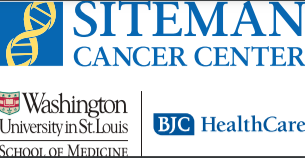- Advertise
- About OncLive
- Editorial Board
- MJH Life Sciences brands
- Contact Us
- Privacy
- Terms & Conditions
- Do Not Sell My Information
2 Clarke Drive
Suite 100
Cranbury, NJ 08512
© 2025 MJH Life Sciences™ and OncLive - Clinical Oncology News, Cancer Expert Insights. All rights reserved.
Role of Stem Cell Transplantation Evolving in Multiple Myeloma
OncLive interviewed Ravi Vij, MD, associate professor, Division of Oncology, Section of Bone Marrow Transplantation, Washington University School of Medicine and the Siteman Cancer Center, on what the future holds for stem cell transplantation in multiple myeloma.
Ravi Vij, MD
Investigational monoclonal antibodies, such as daratumumab and elotuzumab, could potentially change the role of stem cell transplantation for patients with multiple myeloma. These new therapies, and others on the horizon, offer options for patients who are ineligible for a stem cell transplant, and serve as a pretreatment method for patients who wish to delay the procedure.
To discover how these advances will impact patients, OncLive interviewed Ravi Vij, MD, associate professor, Division of Oncology, Section of Bone Marrow Transplantation, Washington University School of Medicine and the Siteman Cancer Center, on what the future holds for stem cell transplantation in multiple myeloma.
OncLive: What is the role of pretransplant therapy in myeloma?
Vij: The goal of the treatment is to establish some element of disease control prior to transplantation. We know that deeper levels of disease control usually correlate with longer survival. Therefore, the goal of therapy is to try and get the disease under control before a transplant will reduce it further, and provide more durable disease control.
How could pretransplant therapy change in the era of monoclonal antibodies?
It is a very vibrant area. It is difficult to say how things are going to evolve. We have a number of new drugs that are coming up—monoclonal antibodies or proteasome inhibitors—and these are going to be initially incorporated into the treatment of relapsed or refractory patients, but will gradually move their way to frontline treatment.
So far, we have generally used three drug combinations to produce the best responses, but it is possible in the future, especially with the monoclonal antibodies, that four drug combinations may be coming into vogue. Oral proteasome inhibitors will probably offer a more convenient regimen. I think its impact is more going to be on the durability of treatment for both transplant and non-transplant, the convenience of long-term oral administration.
What do you see as the role of transplantation in the future?
The role of stem-cell transplantation is still very secure in the treatment paradigm for patients with myeloma. The best results so far have been achieved with good induction therapy, early stem cell transplantation, and post-transplant maintenance. There are certainly patients who are not candidates or wish to delay transplantation, and for them to delay it until first progression is certainly an option.
As far as removing transplant from the paradigm, I think, in the immediate future, there will still be a need for transplantation for several years to come. As newer drugs are tested and trials are conducted and compared to stem cell transplantation, it is possible it will no longer be a necessary treatment paradigm one day. Right now it is something that I think helps the majority of the patients. It is a treatment that is relatively well tolerated, with usually a 1-2% treatment-related mortality rate. It is well tolerated even by older individuals.
Medicare pays for treatment for myeloma for those who are up to 78 years old. Although we may reduce the dosage a little bit in older individuals, they tolerate it well. Several studies have shown, at least in a retrospective manner, that older patients do benefit from stem cell transplantation.
What are some of the barriers to greater adoption of stem cell transplantation?
There is certainly a lot of work being done, which is looking at some of the barriers to greater adoption of stem cell transplantation. Socioeconomic status has been shown by our group to really matter. We know that certain demographics within the population are not even offered the opportunity to see a transplant physician, even if one is available in the vicinity. The number of transplants could literally double if appropriate referrals are made.
Often, the reluctance on the patient’s part can be overcome by explaining to them what the procedure involves, how well it is tolerated, and the benefits it has. It is often more difficult to convince a community physician to make the referral so one can at least have the opportunity to assess a patient. It is a procedure that, contrary to popular belief, is relatively well tolerated and still benefits a lot of patients.


